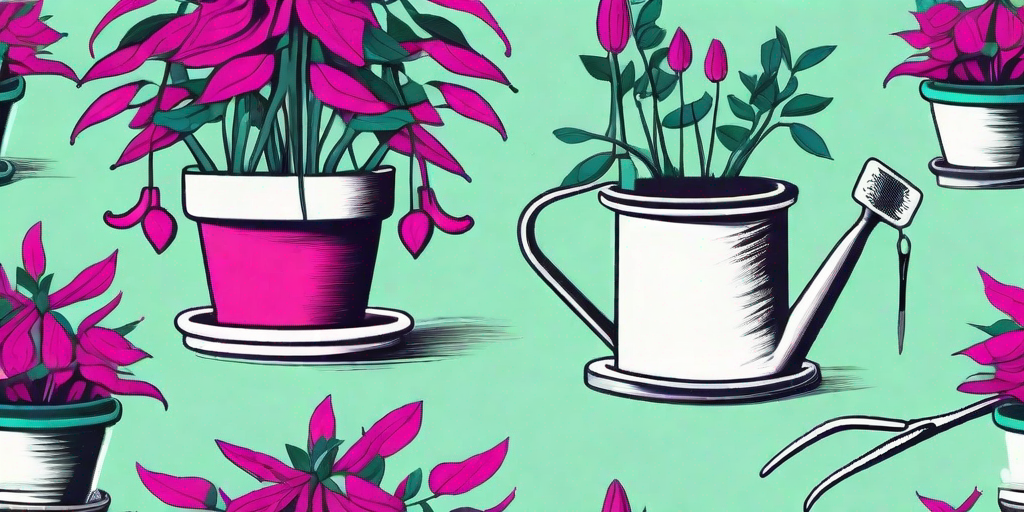
Welcome, green-thumbed enthusiasts and curious beginners alike, to the world of Fuchsia propagation. If you've ever found yourself gazing at a Fuchsia plant, entranced by its vibrant colours and elegant, pendulous flowers, and thought, "I wish I could have more of these in my garden," then you're in the right place. Today, we're going to dive headfirst into the Fuchsia frenzy, teaching you how to propagate these stunning plants like a pro. So, buckle up, put on your gardening gloves, and let's get to it!
Understanding Fuchsia Propagation
Before we delve into the nitty-gritty of propagation, let's take a moment to understand what we're dealing with here. Fuchsia, a genus of flowering plants, is known for its vibrant hues and distinctive, teardrop-shaped flowers. Propagation, on the other hand, is a fancy term for the process of creating new plants from a variety of sources - seeds, cuttings, bulbs, and other plant parts.
When it comes to Fuchsia, the most common method of propagation is through stem cuttings. This method is as simple as it sounds - you cut a piece of the stem, plant it, and voila, you have a new plant! But don't let the simplicity fool you. There's a science to it, and we're here to break it down for you.
The Art of Fuchsia Propagation
Now that we've covered the basics, let's get down to business. Propagating Fuchsia is a bit like baking a cake. You need the right ingredients, the right conditions, and a dash of patience. And just like baking, the end result is always worth the effort.
Step 1: Choosing the Right Cutting
Just as you wouldn't bake a cake with rotten eggs, you shouldn't propagate a Fuchsia with a weak or diseased cutting. Choose a healthy, vigorous stem from your Fuchsia plant. The cutting should be about 2-4 inches long, with a couple of leaf nodes. A node is the point on the stem where the leaf attaches.
Once you've selected your cutting, use a sharp, clean knife or pair of scissors to cut just below a leaf node. Make sure the cut is clean and straight. This will help the cutting absorb water and nutrients more efficiently.
Step 2: Preparing the Cutting
Now that you have your cutting, it's time to prepare it for planting. Remove the leaves from the lower half of the cutting, leaving only a couple of leaves at the top. This reduces water loss and encourages root growth.
Next, dip the cut end of the stem into a rooting hormone. This step is optional, but it can significantly increase your chances of successful propagation. Rooting hormones encourage root growth and help prevent disease.
Step 3: Planting the Cutting
Now comes the fun part - planting the cutting. Fill a small pot with a mixture of peat moss and perlite. This provides a light, well-draining medium for your cutting. Make a hole in the center of the pot, insert the cutting, and gently firm the soil around it.
Water the cutting thoroughly and place it in a warm, bright location, out of direct sunlight. A plastic bag can be placed over the pot to create a mini greenhouse, maintaining humidity and encouraging root growth.
Aftercare and Troubleshooting
Once you've planted your cutting, the real test of patience begins. It may take several weeks for roots to form. During this time, it's important to keep the soil moist, but not waterlogged. Overwatering can lead to root rot, which is as nasty as it sounds.
If your cutting starts to wilt or turn yellow, don't panic. This is often a sign of stress, and it's not uncommon in newly propagated plants. Simply reduce watering and make sure the cutting is in a warm, bright location.
Frequently Asked Questions
When is the best time to propagate Fuchsia?
The best time to propagate Fuchsia is in the spring, when the plant is actively growing. However, Fuchsia can be propagated at any time of the year, as long as you can provide the right conditions.
Can I propagate Fuchsia from seeds?
Yes, Fuchsia can be propagated from seeds. However, this method is more complex and time-consuming than stem cuttings. It also requires a high degree of patience, as Fuchsia seeds can take several weeks to germinate.
Why are my Fuchsia cuttings not rooting?
There could be several reasons why your Fuchsia cuttings are not rooting. The cutting may not be receiving enough light, the soil may be too wet or too dry, or the cutting may be diseased or weak. It's also possible that the cutting was not prepared or planted correctly.
In Conclusion
Propagating Fuchsia may seem like a daunting task, but with a little knowledge and a lot of patience, anyone can do it. So, why not give it a try? You might just find yourself caught up in a Fuchsia frenzy!
Remember, the key to successful propagation is choosing the right cutting, preparing it correctly, and providing the right conditions. And if at first you don't succeed, try, try again. After all, every expert was once a beginner.















